
REAL-TIME 3d TECHNOLOGY
Get ready to experience some of the most advanced and immersive visual and audio experiences ever developed with Real-Time 3D Technology. At Immersive Studio, our expert developers and designers harness cutting-edge software and hardware to deliver unmatched realism, giving businesses and their audiences the opportunity to interact with environments in ways never seen before.
Unlike traditional static 3D or pre-rendered visuals, real-time rendering allows users to manipulate scenes instantly, creating a more responsive and engaging experience. This combination of speed, interactivity, and accuracy has the power to transform industries ranging from marketing and retail to healthcare and engineering. By integrating Real-Time 3D Technology into your business, you can deliver more compelling interactions, elevate your brand presence, and keep your audience engaged in ways that build stronger connections and higher conversions.
The rapid rise of Real-Time 3D Technology is changing how brands connect with customers by providing experiences that are interactive, engaging, and memorable. Companies can now design dynamic solutions that go far beyond static imagery or video, enabling audiences to actively participate with content.
Whether it’s creating interactive product demonstrations, virtual events, or immersive retail experiences, real-time rendering adds a layer of realism and engagement that was previously impossible. For example, in sectors like architecture, healthcare, and training, it brings precision & clarity, while in marketing and entertainment, it delivers excitement & higher customer engagement. These advancements allow businesses to build brand loyalty and stay competitive in industries where innovation & user experience are key.
Real-Time 3D Use Cases
- Simulators
- Configurators
- Virtual Stores
- Marketing
- Virtual Try-On's
- Virtual tours
- Virtual Productions
- Virtual Events
- Virtual Training & Education
- Data Visualisation
- Virtual Sets
- Broadcast Graphics
- Interactive Experiences
Application Of Real-Time 3D Technology
Real-Time 3D Technologies are being increasingly adopted across industries because of its ability to deliver impactful and memorable experiences. From gaming and virtual simulations to product visualisation and digital training, real-time rendering creates a sense of presence that traditional methods cannot match.
Its applications span multiple fields — retail brands use it to develop interactive shopping journeys, architects showcase lifelike building walkthroughs, healthcare providers simulate complex procedures, and educators create virtual environments to enhance learning outcomes. Entertainment, manufacturing, and automotive industries also leverage Real-Time 3D Technology for marketing, customer engagement, and product development. Some powerful examples include:

Real-Time 3D Configurators
Real-time 3D configurators empower designers, sales teams, and consumers to customise products instantly with photorealistic visuals. From furniture and cars to fashion and electronics, users can view variations in design, materials, or colour and see changes applied in real time. This increases buyer confidence and significantly reduces return rates. At Immersive Studio, we integrate industry-specific examples to ensure configurators not only look stunning but also serve as a valuable decision-making tool for businesses.
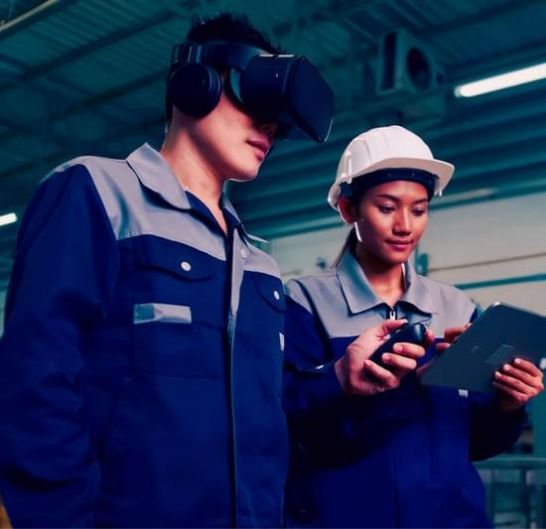
Real-Time 3D Simulators
Digital twin simulations created with Real-Time 3D Technology enable manufacturers and engineers to test how facilities, machines, or products will perform before production. These simulations allow companies to reduce costly errors, optimise processes, and make faster data-driven decisions. Industries such as automotive, aerospace, and oil & gas use these simulators to validate complex systems under realistic conditions, saving time and resources while improving safety and efficiency.
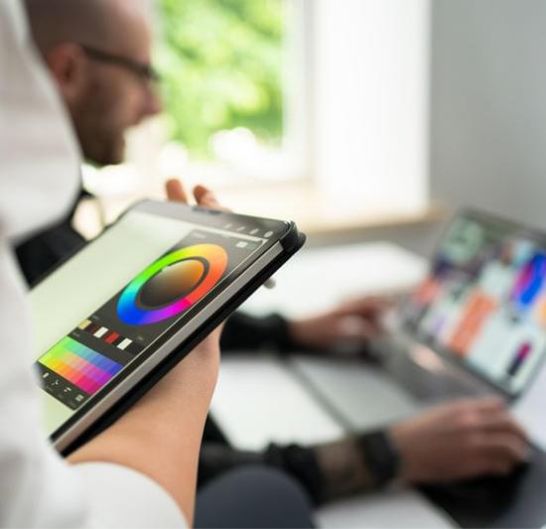
Marketing and Advertising
Marketing powered by Real-Time 3D Technology offers immersive campaigns that outperform traditional visuals. Businesses can create interactive product models, 360-degree animations, and virtual experiences that increase audience engagement and improve conversion rates. Photorealistic visuals, produced in real time, enable marketers to deliver personalised content, showcase unique features, and build stronger brand connections across websites, social media, and digital advertising platforms.
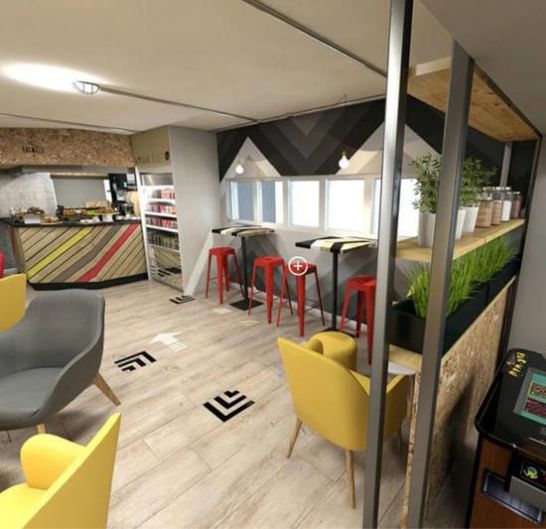
Virtual Stores and Pop-Up's
Virtual stores and pop-ups are redefining online retail by providing a near-real shopping experience without physical constraints. Customers can explore a realistic digital store, navigate through collections, and interact with products as if they were in a brick-and-mortar location. This technology enhances customer engagement, extends brand reach globally, and offers retailers cost-effective ways to experiment with innovative shopping formats.
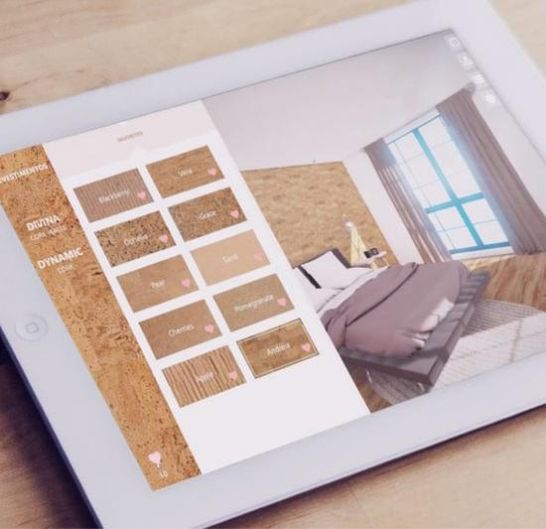
Virtual Try-On's
Virtual try-ons powered by Real-Time 3D Technology enable consumers to preview clothing, eyewear, jewellery, or cosmetics with lifelike accuracy. This not only boosts customer confidence but also reduces product returns by ensuring better fit and style decisions. Retailers benefit by delivering highly personalised shopping experiences that adapt to individual preferences while increasing online sales and strengthening brand loyalty.
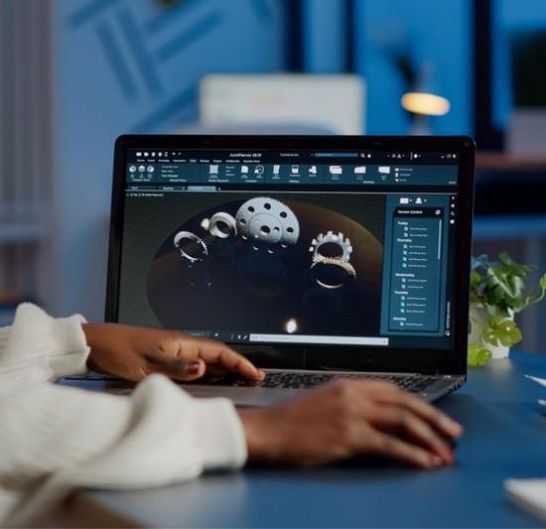
Real-Time 3D Prototyping
Real-time 3D prototyping accelerates product development cycles by allowing engineers and designers to create, test, and refine models instantly. Unlike traditional methods, prototypes built in digital 3D environments are both highly detailed and fully interactive. This approach enables faster innovation, reduces material costs, and provides a more accurate foundation for manufacturing, helping businesses bring products to market quicker and with greater precision.
What is Real-Time 3D?
Real-Time 3D Technology is an advanced method of rendering three-dimensional visuals instantly, enabling users to interact with digital models and environments in real time. Unlike pre-rendered graphics, which are static and slow to produce, real-time 3D creates a seamless, responsive experience where every movement or interaction updates immediately.
This technology combines speed, visual accuracy, and interactivity, making it possible for users to manipulate objects, explore environments, and test variations dynamically. It provides the feeling of being inside a realistic virtual world that responds naturally to user actions, bridging the gap between the physical and digital.
For industries such as healthcare, retail, property, and manufacturing, this means offering customers and teams the ability to visualise complex ideas and products more clearly, reducing uncertainty and improving decision-making.
What is Real-Time 3D used for?
The applications of Real-Time 3D Technology go far beyond gaming or entertainment. Its immersive capabilities are transforming sectors as diverse as medicine, e-commerce, automotive, education, and architecture. Businesses can use real-time 3D to create interactive simulations, virtual tours, digital training modules, and product configurators. These tools allow customers to engage with offerings in a way that static visuals cannot achieve.
In healthcare, real-time 3D simulations support advanced training for surgeons and clinicians, reducing risk by providing lifelike practice scenarios. In real estate, prospective buyers can explore properties virtually before visiting in person, saving time and effort. For retail, virtual try-ons and interactive product displays increase buyer confidence, while in engineering, prototyping with Real-Time 3D Technology shortens development cycles and lowers costs. By enabling this level of engagement, companies can differentiate themselves from competitors and create more meaningful experiences for their audiences.
What platforms can real-time 3D be used on?
Real-Time 3D Technology is highly versatile, with experiences deployable across multiple platforms. It supports desktop applications, mobile devices, VR headsets, AR tools, and increasingly cloud-based environments, allowing users to access immersive content wherever they are. Businesses benefit from its cross-platform compatibility, as once assets are created, they can be adapted for different devices without losing quality.
The growth of GPU hardware, cloud streaming, and advanced optimisation techniques means real-time 3D is now accessible even on lightweight devices, making it scalable to larger audiences. This adaptability ensures businesses can deliver consistent, high-quality experiences across websites, apps, exhibitions, and digital campaigns. It also positions real-time 3D as a future-proof investment, as the technology continues to integrate with evolving digital platforms.
What technology is used to create Real-time 3D?
Real-Time 3D Technology is built using advanced software engines such as Unreal Engine and Unity, which are designed to render visuals instantly while maintaining photorealistic detail and interactivity. These platforms allow designers to build lifelike environments, realistic lighting, and dynamic animations that respond immediately to user input.
To achieve this, developers combine high-performance GPU hardware with rendering techniques like ray tracing and optimisation processes that ensure smooth performance across devices. Increasingly, cloud streaming and AI-driven tools are also being adopted to enhance scalability and automate elements such as asset creation. Together, these technologies make it possible to deliver accurate, engaging, and highly interactive Real-Time 3D experiences across industries ranging from retail and healthcare to training and architecture.
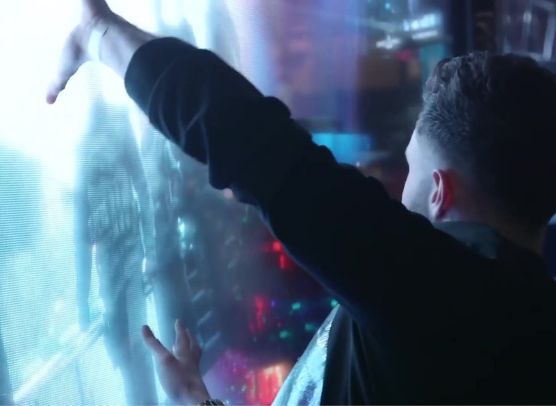
Check Out Some Real-Time
Interactive 3D In Action
At Immersive Studio, we’re passionate about showcasing what Real-Time 3D Technology can achieve for brands, enterprises, and organisations. From interactive retail experiences to architectural walkthroughs and virtual medical training, our portfolio demonstrates the transformative potential of this technology.
These projects highlight how real-time 3D not only improves visual quality but also strengthens engagement, creating meaningful connections between users and digital content. By partnering with us, clients can leverage interactive 3D to stay ahead of competitors and embrace the future of digital storytelling.
What are the benefits of Real-Time 3D technology?
Real-Time 3D Technology offers a wide range of advantages that extend beyond visual appeal. Its ability to render complex environments instantly enables businesses to deliver immersive and engaging experiences that strengthen customer interaction and brand loyalty. The technology provides highly realistic simulations, allowing users to explore products, environments, or scenarios in ways that static visuals cannot match.
For businesses, this creates opportunities to shorten sales cycles by giving customers confidence through interactive demonstrations. In industries such as healthcare and manufacturing, real-time simulations reduce risks and costs by allowing testing before real-world implementation. Furthermore, the scalability of real-time 3D means content can be reused across platforms—from mobile to VR headsets—maximising reach and return on investment. The technology also improves collaboration, as teams across different locations can interact with the same 3D model in real time, making decision-making faster and more accurate.
What are the challenges with Real-time 3D technology?
While Real-Time 3D Technology has clear benefits, it also presents several challenges that businesses must consider. The first is the demand for significant computational power—real-time rendering requires advanced GPU hardware and careful optimisation to avoid delays or performance issues. This can increase the upfront cost of development, particularly for companies that need high-fidelity visuals on multiple platforms.
Content creation is another hurdle. Building detailed 3D assets requires expertise and time, and ensuring they are optimised for real-time use adds complexity. Integration across platforms can also be challenging, as not all hardware handles the same workloads efficiently. In addition, keeping experiences both visually rich and responsive can require continuous updates as technology evolves. Despite these challenges, with the right planning and expertise, the long-term gains of real-time 3D far outweigh the difficulties, making it a valuable investment for forward-looking businesses.
Let's Build The Future Together
The arrival of Real-Time 3D Technology is revolutionising industries by enabling more engaging, accurate, and efficient digital experiences. Businesses that adopt real-time 3D gain the ability to transform customer journeys, streamline product development, and unlock new revenue opportunities.
Immersive Studio helps enterprises, retailers, educators, healthcare providers, and entertainment brands embrace this evolution. By combining technical expertise with creative vision, we build solutions that not only look visually stunning but also deliver measurable impact. Together, we can shape the future of interactive digital experiences.
Real-Time 3D For
Enterprise
Real-Time 3D Technology is transforming the enterprise landscape by enabling organisations to interact with complex data, workflows, and systems in a far more dynamic and intuitive way. By using real-time visualisation, companies can create interactive models for training, product development, or large-scale project management. This allows decision-makers to test strategies, predict outcomes, and identify potential challenges before implementation.
Beyond efficiency, enterprises can leverage real-time 3D for enhanced collaboration—teams in different locations can work on the same 3D environment simultaneously, reducing delays and miscommunication. From immersive training simulations to virtual boardroom presentations, Real-Time 3D Technology equips businesses with innovative tools to operate smarter, reduce risks, and gain a competitive advantage in rapidly evolving markets.
Real-Time 3D For
Retail
For the retail sector, Real-Time 3D Technology is revolutionising how consumers experience and interact with products. By integrating virtual try-ons, real-time product configurators, and immersive virtual stores, retailers can allow customers to explore items in detail from anywhere. This reduces reliance on physical stores while enhancing customer engagement and boosting online conversions.
Shoppers can rotate products, customise them to their preference, and even visualise items in their own environment before purchase, leading to greater confidence in buying decisions. For brands, this means fewer product returns, increased sales, and stronger customer loyalty. Whether through interactive mobile apps or virtual reality shopping environments, real-time 3D creates retail experiences that are engaging, convenient, and highly memorable.
Real-Time 3D For
Brands
Brands are adopting Real-Time 3D Technology to create more impactful and interactive campaigns that stand out in competitive markets. Instead of static adverts, companies can showcase products through lifelike 3D models, immersive storytelling, and personalised virtual experiences. These experiences not only capture attention but also allow customers to interact directly with the brand in ways that traditional media cannot achieve.
This interactive approach fosters deeper emotional connections, helping brands increase awareness and improve customer retention. By leveraging real-time analytics within these 3D experiences, brands can also measure engagement levels and tailor campaigns for greater effectiveness. From product launches to promotional events, real-time 3D empowers brands to deliver campaigns that are not only visually compelling but also strategically effective in driving results.
Real-Time 3D For
Automotive Industry
In the automotive industry, Real-Time 3D Technology is reshaping how vehicles are marketed, designed, and experienced. Dealerships can now offer interactive virtual showrooms where customers explore cars in full detail, customise features in real time, and even take virtual test drives—all from the comfort of their home. This not only improves the buying journey but also widens reach beyond physical dealership boundaries.
For manufacturers, real-time 3D enables design teams to collaborate on digital prototypes, reducing development costs and speeding up production. Engineers can test performance, safety, and design iterations virtually before physical models are built. With immersive configurators, customers are also empowered to design vehicles tailored to their preferences, strengthening the bond between consumer and brand while streamlining the sales process.
Real-Time 3D For
Education
Education is being transformed by Real-Time 3D Technology, which provides learners with interactive and immersive experiences far beyond traditional teaching methods. Students can explore historical landmarks, perform science experiments, or practise technical skills within realistic, virtual environments. This fosters engagement and improves knowledge retention by enabling learners to visualise and interact with concepts in real time.
For educators, the technology opens opportunities to deliver dynamic, curriculum-aligned experiences that can be customised to suit different learning styles. Real-time 3D also allows for collaborative virtual classrooms, where students across the globe can work together in shared environments. This adaptability ensures education remains engaging, inclusive, and effective in preparing learners for the challenges of the future.
Real-Time 3D For
Healthcare
Healthcare has seen significant advancements with the integration of Real-Time 3D Technology. Medical professionals can now use interactive 3D models to visualise anatomy, practise surgical procedures, and conduct diagnostics with greater precision. This reduces risks for patients and provides practitioners with more detailed insights before performing real-world treatments.
Real-time 3D also supports patient engagement—doctors can explain diagnoses and treatment options through interactive visualisations, improving understanding and trust. In training, students and professionals alike benefit from highly realistic simulations that prepare them for complex medical scenarios without endangering patient safety. The result is faster learning, better outcomes, and more confidence in delivering care.
Real-Time 3D For
Entertainment
The entertainment industry has embraced Real-Time 3D Technology to deliver experiences that are more immersive and interactive than ever before. From gaming to live performances and film production, real-time rendering creates lifelike environments and characters that respond dynamically to user interaction. This not only enhances the quality of entertainment but also expands creative possibilities for producers and developers.
Streaming platforms and live events are also integrating real-time 3D to provide audiences with interactive experiences, blending the virtual and physical worlds seamlessly. By offering such innovative engagement, the entertainment industry is able to attract wider audiences, maintain viewer attention, and create new revenue opportunities across multiple channels.
Real-Time 3D For
Architecture
Architects and designers are increasingly relying on Real-Time 3D Technology to bring concepts to life before construction begins. By creating immersive, interactive 3D models, architects can present ideas to clients in a way that static blueprints never could. Clients can explore buildings virtually, walking through spaces, visualising materials, and assessing lighting conditions long before ground is broken.
This reduces costly revisions during construction and ensures projects meet client expectations from the start. Collaboration is also enhanced, as stakeholders can provide feedback in real time, allowing architects to make adjustments instantly. The result is a more streamlined design process, improved accuracy, and a stronger alignment between creative vision and final delivery.
Real-Time 3D For
Real Estate
In real estate, Real-Time 3D Technology has become a powerful tool for property marketing and sales. Potential buyers or tenants can take virtual tours of properties, exploring spaces in high detail without physically visiting them. This saves time, widens the pool of interested clients, and allows properties to be showcased to international audiences effortlessly.
The technology also helps buyers make informed decisions by enabling them to visualise floor plans, interior designs, and renovations in real time. Real estate agents benefit from reduced site visits, faster sales cycles, and higher client satisfaction. By providing interactive and engaging property experiences, real-time 3D is reshaping how real estate is marketed, purchased, and sold in today’s digital-first world.
Frequently Asked Questions - Real-Time 3D Technology
What is Real-Time 3D Technology?
Real-Time 3D Technology is the process of rendering and displaying interactive 3D graphics instantly, allowing users to interact with virtual objects or environments without delay. Unlike pre-rendered 3D visuals, it delivers immediate feedback, creating highly immersive and realistic experiences. This makes it ideal for industries such as retail, education, healthcare, and entertainment where visual engagement and accuracy are essential.
How does Real-Time 3D Technology benefit businesses?
Real-Time 3D Technology helps businesses improve customer engagement by creating immersive, interactive experiences that drive higher conversions and brand loyalty. It enables instant product customisation, realistic virtual demonstrations, and detailed simulations that support decision-making. Companies across industries use it to reduce costs, shorten development timelines, and provide engaging marketing campaigns that stand out in competitive markets.
What industries can benefit most from Real-Time 3D Technology?
Many industries are adopting Real-Time 3D Technology, including retail, automotive, architecture, real estate, and healthcare. Retailers use it for virtual try-ons, while real estate agents offer immersive property tours. Healthcare leverages it for medical training, and automotive companies provide interactive car configurators. The adaptability of the technology allows it to meet the unique needs of virtually any sector seeking innovation.
What platforms support Real-Time 3D Technology?
Real-Time 3D Technology works seamlessly across multiple platforms, including VR headsets, mobile devices, desktop computers, and game consoles. With advances in cloud streaming and GPU optimisation, businesses can now deliver high-quality 3D experiences to wider audiences without requiring expensive hardware. This versatility allows brands to reach customers on their preferred devices while maintaining consistency and quality across platforms.
How is Real-Time 3D Technology created?
Real-Time 3D Technology is built using advanced game engines such as Unreal Engine and Unity, which support real-time rendering and interactivity. These engines use techniques like ray tracing, dynamic lighting, and physics simulations to create lifelike visualisations. By combining creative design with technical expertise, developers and animation studios can deliver realistic, interactive 3D environments tailored to business goals and customer engagement.
What are the benefits of Real-Time 3D Technology over traditional 3D?
Unlike traditional 3D, which is static or pre-rendered, Real-Time 3D Technology enables instant interaction and visual changes. This provides users with an engaging and dynamic experience, from exploring customised products to taking virtual tours. It reduces the need for multiple prototypes, lowers costs, and enhances realism. Businesses benefit from improved engagement, faster innovation cycles, and stronger customer trust.
What are the challenges of implementing Real-Time 3D Technology?
Implementing Real-Time 3D Technology requires significant computing power, skilled development, and optimised design pipelines. Rendering lifelike visuals while maintaining smooth performance can be complex, especially for mobile or cloud delivery. Businesses must also invest in technical expertise to ensure scalability and seamless integration. Despite these challenges, the long-term benefits outweigh the hurdles, driving innovation and customer engagement effectively.
How does Real-Time 3D Technology improve customer experiences?
Real-Time 3D Technology allows customers to engage with products, environments, or services in interactive and meaningful ways. From virtual showrooms to personalised try-ons, users gain control over their experience, which leads to stronger trust and satisfaction. This immersive engagement makes decision-making easier, increases confidence in purchases, and fosters deeper brand connections, resulting in enhanced loyalty and repeat business.
Why should businesses invest in Real-Time 3D Technology now?
As customer expectations for immersive experiences grow, Real-Time 3D Technology offers businesses a competitive advantage by blending innovation with engagement. Early adopters gain the ability to differentiate their brand, attract new audiences, and streamline workflows with interactive simulations. With the rise of VR, AR, and cloud-based platforms, investing now ensures long-term relevance, stronger market presence, and measurable business growth.